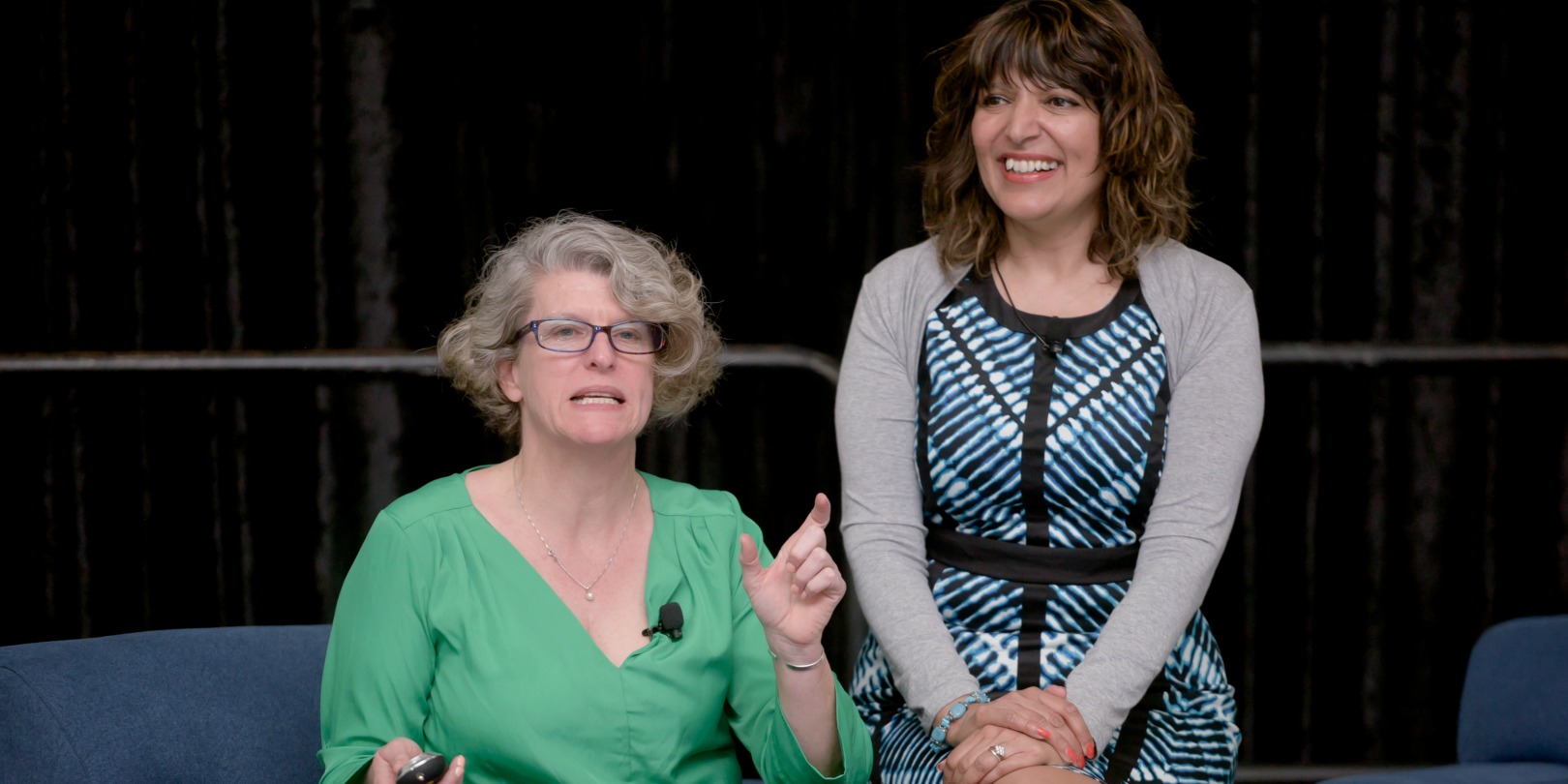Mindful eating is eating with intention and attention. Azmina Govindji, RD (AG), reviewed with Megrette Fletcher (MF) the six decision points regarding food and eating, and saw that mindful eating counseling is a fun and interactive way to connect with individuals with at risk for diabetes. Here is a summary of their live session of questions and answers.
AG: Megrette, let’s explore the “WHY?” first. Why do I eat?
MF : There are two reasons. The first is because I am hungry. The second is I am eating because of non-food triggers. Three good examples are proximity to food, emotions or habits. Mindful Eating asks, “Am I aware of situations or emotions (stress, boredom, socializing, events…) that trigger me to want to eat when I’m not hungry?” We have created a handout that explains the concept of pausing and “check in” and notice your physical sensation. It is called The Body, Mind, Heart Scan, that is described in Eat What You Love, Love What You Eat with Diabetes. It can help a person pause and observe all the information that is present before making a food choice.
AG: WHEN we eat can also have an important impact on food choice.
MF : Many people struggle to identify physical hunger. Having a fast paced life and being over scheduled are usual reasons not to check in. This is why mindful eating talks about having a pause or ‘check in’ to rate physical hunger. If I am not physically hungry, (because I checked in with my hunger) then WHEN I want to eat is WHEN I AM mentally, emotionally stressed, or triggered by habit (mindless eating). The part about mindful eating that many people misunderstand is thinking you “shouldn’t eat” when you are not hungry. The more effective question is “What can I do to cope better with my mental, emotional or environmental triggers instead of eating?”
AG: The next part of the Mindful Eating Cycle : WHAT do I eat?
MF : If a person is eating because he is physically hungry, there is a huge opportunity to learn about nutrition and expand our education. Mindful Eating encourages each person to reflect on the overall balance, variety, and moderation of their food choices. Even if a person is reaching for food due to emotional triggers, helping him choose food he enjoys that is nutrient dense or foods that have less glycemic impact can have a huge effect on the prevention of diabetes and overall blood sugar control. Foods such as yogurt are a good choice in that context.
AG: Can you talk about distracted eating? HOW do I eat ?
MF : As a society, distracted eating is often the norm. Distraction often leads to eating quickly – so you can get back to the task. You might notice the speed of your eating by asking “Do I eat fast?” If you think, “Yes, I do eat fast!” You might consider what is the outcome of rapid eating. Eating is a huge source of pleasure and when a person eats in a distracted way, they seem to miss the pleasure of eating. Therefore, bringing back pleasure and enjoyment while eating is an important part of creating a sustainable behavioral change.
AG: Can you talk about portions? HOW MUCH do I eat ?
MF : Each choice a person makes regarding food is two choices – what to eat and how much. In nutrition, we know that portion choices are key. In mindful eating, there is a huge shift from “a serving size” to “How much food is needed to ease my current level of hunger?” Brian Wansink, Ph.D. in his book Mindless Eating, explained that people eat what is served them, even if the food tastes bad! When mindless eating is the concern, having environmental controls (like prepackaged foods) is a great place to start. Choosing single servings products like yogurt can help thus a person better manage portions!
AG: I think we are at the final step in the mindful eating cycle — the WHERE? Where do I invest my energy?
MF : It is easy to forget that the purpose of choosing nutrient dense foods is to help us live life to the fullest. Health messages can get twisted around in my head, and I think I should eat healthy because someone told me to, instead, realizing I am eating healthy, nutritious foods because it gives me the energy to live my life well. This desire to “Be good” can create the conditions for emotional eating. Set a clear intention is part mindful eating! Eating mindfully offers you a chance to pause and gain perspective before you eat but you can pause at any point and ask “Why am I eating?” Again, questions help a person see choices. They replace the more parental internal voice of what you SHOULD do.
Key learnings:
Although it is a deceptively simple title, the question “Am I hungry?” opens the door to understanding why, when, what, how, and how much you eat, and where you invest your energy. These are the questions the ‘Am I Hungry? Mindful Eating Cycle’ helps you to answer :
- Why do I eat? Or in other words, what is driving my eating cycle at any given time?
- When do I feel like eating? When do I think about eating? When do I decide to eat?
- What do I eat? What do I choose from all the available options?
- How do I eat? How, specifically, do I get the food I’ve chosen into my body?
- How much do I eat? How much fuel do I consume?
- Where do I invest the energy I consume? Where does the fuel I’ve consumed go?



